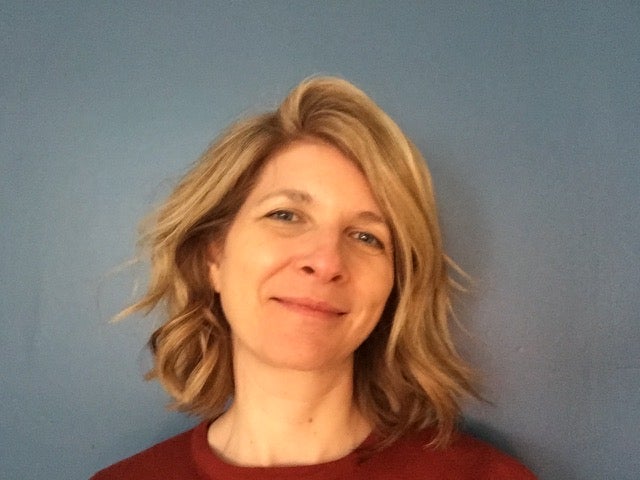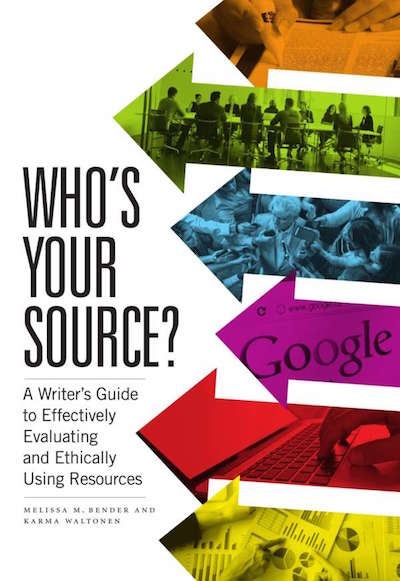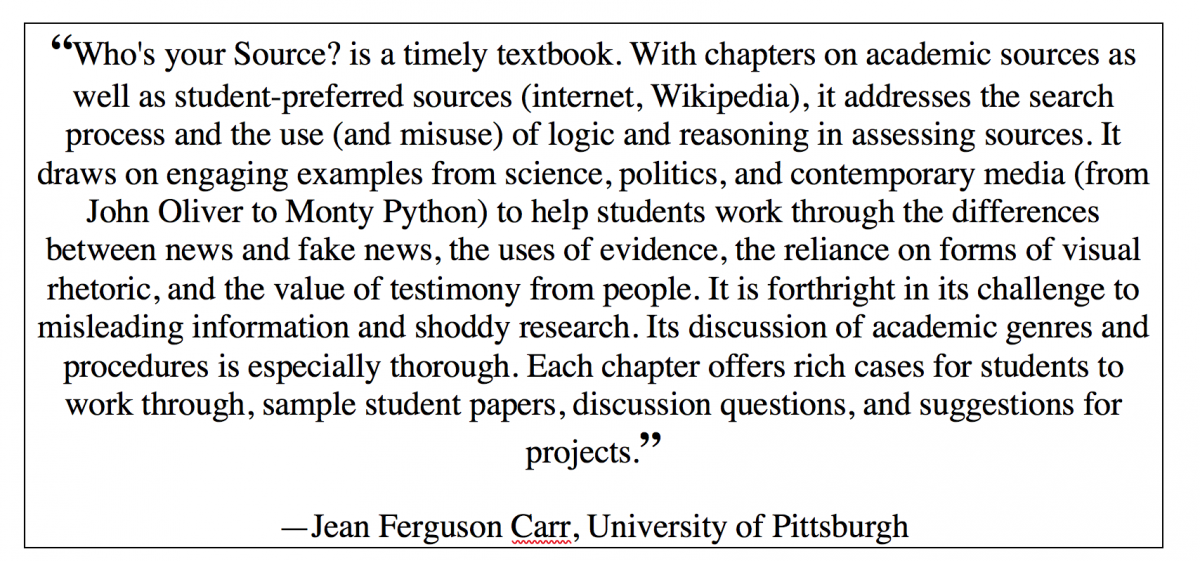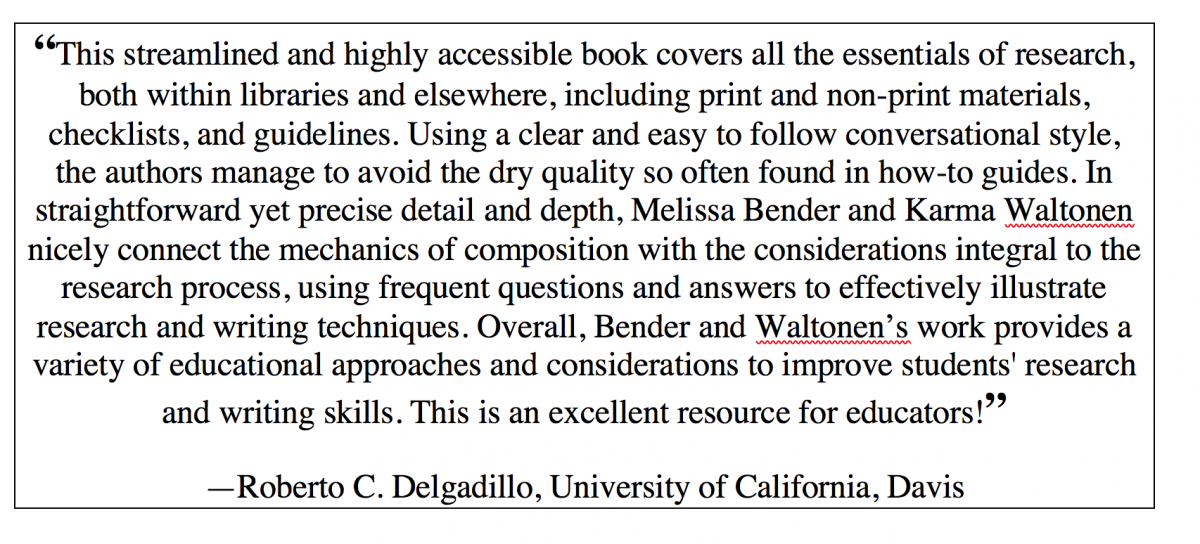Melissa Bender (PhD English, University of California, Davis, 2009; MFA, University of Pittsburgh, 1994.) is a senior lecturer in the University Writing Program at UC Davis, where she also served as the associate director of Writing Across the Curriculum from 2016 through 2019. She teaches a variety of writing in the disciplines courses, including writing in history, fine arts, the health professions, and science, as well as courses on advanced composition, travel writing, and visual rhetoric. She has also led multiple travel study courses in Europe, Australia, New York City, and Washington, D.C. With Karma Waltonen, Melissa has co-authored Twenty Writing Assignments in Context: An Instructor’s Resource for the Composition Classroom (McFarland, 2017) and Who’s Your Source? A Writer’s Guide to Effectively and Ethically Using Resources (Broadview Press, 2020). She has also published an edited collection with Klara Stephanie Szlezák, Contested Commemoration in U.S. History: Diverging Public Interpretations (Routledge 2020). Melissa’s monograph, Dysfunctional Family Values: Nurturing the Neoliberal Self in U.S. Memoir, will be published by Lexington Books in 2021. Her research interests include writing studies, visual rhetoric, American Studies, memoir, and popular culture.

Melissa Bender
Barbara Edelman (MFA, University of Pittsburgh 1995; MA, California State University, Northridge 1992) is a senior lecturer in English at Pitt, where she teaches in the Writing, Composition, and Literature programs and, with Sarah Leavens, coordinates the Writers Café. Her poetry collections include Dream of the Gone-From City (Carnegie Mellon University Press, 2017) and the chapbooks Exposure (Finishing Line Press, 2014) and A Girl in Water (Parallel Press, 2002). She has received an individual artist’s grant in poetry from the Pennyslvania Council on the Arts and residency fellowships to The Hambidge Center, the Virginia Center for Creative Arts, and the Vermont Studio Center.

Cover, Who's Your Source
Barbara Edelman: Congratulations on the very recent publication of Who’s Your Source? The textbook is comprehensive: much more than a guide to evaluating sources, it’s also a guide to conducting research and a guide to writing. How did you get the idea to write this book?
Melissa Bender: Prior to beginning our work on Who’s Your Source? Karma [Waltonen] and I had been planning to write a textbook on writing in the health professions because we both teach a course on this subject. Our plans changed after the 2016 presidential election. We were both distressed by the extent to which misinformation and fake news influenced the public conversation about the candidates and, ultimately, the results of the election. Like a lot of our friends and colleagues, we spent many hours after the election lamenting how easily people were misled by unreliable sources of information. Then we decided to stop complaining and do something. We were en route to the Writing Research Across Borders conference in [Bogotá] Colombia in February 2017 when we decided to put the health professions textbook project on hold and start developing the ideas for Who’s Your Source?
Although it certainly wasn’t just young people or students who were misled by election-season disinformation campaigns, this is the demographic that we are naturally most concerned with as educators. We wanted to write a book, as opposed to creating lessons only for our students, so that we could reach a larger audience of young adults and, we hoped, help other instructors find ways to address these issues with their own students.
You’re correct, though, that this book is a guide for conducting research, and not simply a guide for evaluating sources. We felt that the concerns that first inspired us to write this book were best addressed within the context of the research and source work that students need to do for their undergraduate classes and beyond.
BE: I can imagine a whole course structured around the text. Have you and/or Karma taught or considered such a course? What would be your ideal and fullest use of the book?
MB: I recently reworked my advanced composition course so that it is structured around the book. Over the course of the 10-week quarter, the students develop a research project based on a problem or challenge in their major discipline or intended career. The chapters in Who’s Your Source? guide them through research steps in the process—from their initial efforts to discover the relevant problems or challenges, to writing a proposal, an annotated bibliography, and a research paper. I can imagine an instructor using the book in this way in any course that involves the students in conducting research or incorporating multiple sources in their writing, including a first-year composition course.

Blurb for book
BE: What are ways you imagine Who’s Your Source? employed in writing-intensive courses, in various fields, that need to cover a lot of other content?
MB: Karma and I have used the book (even still in manuscript form) in a variety of writing in the disciplines courses, including writing in science, history, health sciences, international studies, fine arts, and others. Content coverage, of course, is always a question. I know from my experience leading the Writing Across the Curriculum program at UC Davis that instructors in many disciplines feel as though they don’t have time to teach writing even though they’re assigning writing. Especially in introductory or survey courses, there’s pressure to cover a lot of content. My point of view, though, is that the writing of the discipline is an aspect of content. That’s one reason why ladder faculty earn tenure for publishing—they’re creating the content of the discipline through their writing. If we’re not teaching students how to write and research within the discipline of the course, then we’re not really covering content. Who’s Your Source? can be used in such contexts to help students understand the expectations for effective writing and research within a discipline. For example, an assignment based on Chapters 1, 2, and 8 (particularly sections B & D), might ask students to locate and examine a few research articles from the course discipline, and then write a brief reflection explaining the genre conventions for publishing in the discipline. The students could then be prompted to make use of these conventions when writing their own research papers later in the course.
BE: Can you talk a little about what your experience at Pitt has meant to you as a writer and teacher?
MB: Trying to be specific about what my time at Pitt has meant to me as a writer and a teacher kind of feels like trying to explain what learning to walk has meant to me as an able-bodied person. I learned how to be a writer by teaching writing, and how to teach writing by learning to write. Both of those things happened at Pitt, simultaneously, and under the guidance of some of the people to whom Karma and I dedicated our book (“the people who taught us how to write effectively and ethically”).
But I will try to put it into words.
I was only about a minute older than my students when I walked into the composition classroom at Pitt for the first time. We were teaching Richard Rodriguez’s essay, “Th Achievement of Desire,” as a part of the common syllabus that semester, and I remember finding the idea that education could change a person fundamentally to be earth shattering and also thinking that this idea didn’t apply to me, somehow. I only thought about what it might mean for my students, as if I were already fully formed. I was so naïve! I hadn’t even known that composition existed as a field of research prior to teaching it for the first time. If someone had told me then that I would someday be writing a composition textbook or teaching courses on writing in science—and enjoying it—I would not have believed it. I thought then that I was only going to write fiction and teach creative writing. But, in retrospect, I can see how I was getting hooked on teaching writing as a form of knowledge production or intellectual inquiry to students who didn’t necessarily want to become writers themselves.
It wasn’t until after I left Pitt and started teaching writing in other contexts that I realized how much I had been shaped by my first teaching experiences and first teaching mentors. Similarly, I only realized how much my MFA education, my training as a fiction writer, had influenced my intellectual development when I started to see it coming up in other places. I draw upon what I learned then about narrative, for instance, regardless of what I’m writing, and those lessons likewise make their way into my teaching. Without the mentoring I received in creative writing, I would not today know how to teach my science students how to write metaphors to convey technical subjects to lay audiences or how to help my health professions students compose effective patient case studies.
BE: Thanks for articulating that response! For one thing, from a purely selfish perspective, it helps me better understand my own experience.
You’ve collaborated on your last three publications, and you and Karma have worked together on conference presentations. Can you speak about your experience of writing collaboratively? Do you have tips for writers?
MB: Karma and I have known each other (as writers, teachers, and friends) for 20 years, and we trust each other. I’m never worried that she’s judging me if I send her a draft with some really crappy sentences in it, and I know she won’t be offended if I tell her I don’t like a turn of phrase that she’s using. We can also trust each other to meet deadlines, to be honest with each other when we’re struggling with something, to pull our fair share of the weight, and to compromise when necessary. I think that neither of us would have embarked upon a co-writing project had we not trusted each other in these ways.
You don’t have to know your writing partner for 20 years to collaborate effectively, but trust is essential as is having shared vision. If either of those elements is missing, a co-writing project is likely to be more stressful than fulfilling. Putting both the vision and a detailed plan of action into writing can help both co-authors stay on track. A solid co-writing plan breaks the project down into as many small steps as you can anticipate from the start, establishes the projected date for completing each step, and indicates which writer is going to take the lead on each step.

book blurb
BE: I’m also curious about collaboration between two writers on the level of style, especially in creating a text with a fairly conversational tone. You establish a “we,” a first-person plural narrator, and you clearly depict, through anecdotes, who comprises that “we.” Did each of you compromise a little on style decisions? Did you eventually develop what felt like an organic, collaborative voice, distinct from the individual style either of you might have employed to write the same text?
MB: From the start we agreed that we wanted to strike an informal tone, that we wanted to use the first-person plural, and that we would address the reader directly as “you.” Essentially, we wanted to speak to our readers the way that we talk to our students when we’re in the classroom. Nonetheless, we each had to compromise a bit in terms of style. I tend to write longer sentences than Karma. She employs the dash more liberally than I. We worked on blending these and other style choices, especially after one of the peer reviewers mentioned the differences (not very diplomatically, I might add), in the first-draft feedback we received. It didn’t come naturally at first, but I’d say that, after we worked on the manuscript for some time, the voice started to sound more unified without feeling forced.
BE: I got hooked by your examples of good sleuthing as a component of sound research. Through depicting some satisfying detective work of your own, you invite readers to take on the challenge of busting unreliable sources. You third “R” in this process, “reality check”—asking students to step back, think logically, and use numbers and common sense—feels especially helpful in revealing the practicality of a procedure whose meaning might be obscured by protocol. Have you worked with students on some of the fake-news-busting strategies you write about?
MB: Yes, students do get excited about this. My science and tech students are all much better at math and data visualization than I am, so they love it when they can use their skills to question the design of a graph, for instance, or when they can get their calculators out to assess the validity of numbers-based claims.
In some courses, I have had students find and compare websites or social network posts that may be spreading fake news and then have them give a brief (five-minute) informal presentation on them in class—sharing with their classmates the “clues” that they’ve noticed. The audience for these presentations is usually very enthusiastic.
This quarter, I’ve been talking a lot about the spread of misinformation and conspiracy theories with the students in my science writing course. Naturally, we’re all obsessed with COVID-19, and my science students don’t really need to do much “sleuthing” to sniff out misinformation about the virus. Still, we have had some fun and productive conversations (via Zoom) about how they would use some of the “reality check” strategies to help other people understand that, for instance, the virus isn’t spread via 5G networks.
BE: Yikes. On the other hand, have you perceived that any of your students seem to buy into the idea that truth doesn’t always matter?
MB: Honestly, I don’t get much of that attitude from my students. Maybe they hold that opinion but don’t express it to me? Maybe the postmodern era has officially come to an end? I think the more common—and sad—attitude that I see among students is resignation that, though the truth and facts matter, there’s no longer any way of proving them.
BE: The book uses wonderful references to popular culture: The Simpsons, John Oliver, Monty Python. You surveyed students to decide on content for the book. What about deciding on pop culture references? Did you feel you needed to reach a broad age range to include potential students and teachers?
MB: Karma is a pop culture queen. She’s published on "The Simpsons," "Star Trek," and other television and film topics, and she uses references and examples from pop culture regularly when she’s teaching. I have my own pop culture interests that appear in the book, but I relied on her expertise in this area with regard to which examples might appeal to our readers—students and instructors alike.
BE: I knew you first as a fiction writer. Clearly, skilled storytellers were involved in the writing of this book. Do you have any good stories about “the making of Who’s Your Source?”?
MB: Writing this book saved me from an unhealthy obsession with bananas. On the same trip to Colombia that I mentioned earlier, I saw in a museum a piece of art featuring bananas that sent me down a research rabbit hole. I borrowed every book on bananas that the UC Davis library has—there are more there than you’d imagine (we’re an ag school). I read a bunch of research articles and reread parts of [Gabriel García Marquéz's] One Hundred Years of Solitude. I wrote and rewrote and rewrote an essay about bananas, politics, and art. It was rejected from every place that I sent it, and I just kept trying to rework it. In the meantime, Karma and I had submitted our book proposal to Broadview Press, and when they accepted it, I finally decided it was time to put the bananas to rest. After I wrote about the banana research in the first draft of Chapter 1, Karma said, “I guess you’re finally going to get to publish something about bananas.” Indeed.
BE: Your writing projects have been varied and fascinating! Twenty Writing Assignments in Context (co-authored with Karma) is a resource for a spectrum of writing classrooms; Contested Commemoration in U.S. History: Diverging Public Interpretations (co-edited with Klara Stephanie Szlezák) is a collection of essays that interrogate who and what is commemorated in America, who and what is erased in the process, and who decides. What do you have in the works?
MB: I’m currently revising my dissertation on U.S. memoirs about growing up in dysfunctional families. It will be published as a monograph by Lexington Books in 2021. Karma and I are also in the very early stages of a creative nonfiction project about one of our mutual obsessions—museums. After I finish those two projects, I plan to get back to my fiction writing roots. I’ve been taking notes for and mentally working out the plot for a novel for some time, and I’m really looking forward to getting down to it!
BE: And I’m really looking forward to reading it!
